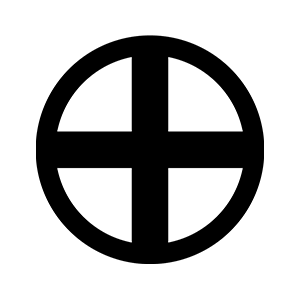Satsuma Domain (2/2)A leading figure of the Meiji Restoration

Shimazu family crest: “Circle and 10”
- Article category
- History of the domain
- domain name
- Satsuma Domain (1601-1871)
- Affiliation
- Kagoshima prefecture
- Related castles

Kagoshima Castle

Kokubu Castle
- related castles
The 9th lord of the domain, Nashinori Shimazu, had a fierce battle for leadership with his father, Shigehide Shimazu, and the issue of fiscal reform in the Satsuma domain led to an internal conflict called the Kinshiroku collapse.
Taking responsibility for this, he was forced to retire.
The 10th lord of the domain, Nariaki Shimazu, was the father of Nariakira Shimazu.
After Shigego Shimazu died at the age of 89, he was finally able to take over the real power, and after achieving the de facto ban of ``paying the debt in 250 year installments'', he started smuggling trade with the Qing Dynasty, monopolizing sugar, making counterfeit money, etc. We quickly recovered our worsening finances.
At the same time, they were eager to absorb Western culture, such as deciding to adopt Western-style gunnery and sending samurai to Nagasaki to learn.
However, because he plotted to make Hisamitsu Shimazu, who was born to his concubine Oyura, the lord of the domain rather than his legitimate son Nariakira, a family turmoil called the ``Oyura Riot'' developed.
This uproar was eventually resolved through the mediation of the elder statesman, Masahiro Abe, with Nariakira taking over as successor, but more than 50 people were punished.
When the 11th lord, Nariaki, died of illness before his father at the age of 50, Shimazu Narioki regained power, hid Takamori Saigo on Amami Oshima, and faked his death.
The 11th feudal lord, Nariakira Shimazu, is often mentioned in novels and movies that feature military units at the end of the Edo period.
He was the adoptive father of Atsuhime Tenshoin, the legal wife of the 13th shogun Iesada Tokugawa, and nurtured great figures such as Toshimichi Okubo and Takamori Saigo, who became central figures in the Meiji Restoration.
Within the domain, he also contributed to national political reform by building a strong country and strengthening the military, and promoting industry and industry.
Examples include Western-style shipbuilding, the construction of reverberatory furnaces and blast furnaces, and the manufacture of mines, torpedoes, glass, and gas lamps.
The Western-style warship Shohei Maru was presented to the shogunate and later played an active role in the development of Ezo land along with the Kanrin Maru.
In addition, he had deep friendships with Matsudaira Yoshinaga, Date Muneki, Yamauchi Toyonobu, Tokugawa Nariaki, and Tokugawa Yoshikatsu, and strongly advocated the union of the military and military and the opening up of the armed forces and the country.
At the same time, he was in fierce conflict with Naosuke Ii, who became Tairo in 1858, over the issue of succession to the shogun. This conflict ended with Nariakira defeated because Naosuke Ii carried out Ansei no Taigoku to suppress the opposition.
Furthermore, Tenshoin Atsuhime's marriage to the 13th shogun Tokugawa Iesada was also to resolve this shogun succession issue.
When the 14th shogun, Tokugawa Iemochi, was established, Nariakira planned to lead 5,000 domain soldiers to Kyoto to protest, but just before that, he watched a drill for the dispatch of troops at Kagoshima Castle. During this time, he suddenly fell ill and died immediately.
There is a theory that the cause of death was ``cholera,'' but because the onset of illness and death were so sudden, and the symptoms did not correspond to cholera, the theory of ``poisoning'' persists to this day.
The last lord of the domain, Tadayoshi Shimazu, was a child of Hisamitsu Shimazu, but he continued his adoptive father's will and after the 15th shogun Yoshinobu Tokugawa returned to power, he received advice from Takamori Saigo, Toshimichi Okubo, Taito Komatsu, and others to become a soldier of the Satsuma domain. He led 3,000 soldiers to Kyoto and contributed to the great edict of the restoration of the monarchy.
After the Meiji Restoration, he returned the land and became the governor of the Satsuma domain, but it is said that he remained in Tokyo and left the administration of the domain to Takamori Saigo.
After the abolition of the feudal domain and the establishment of prefectures in 1894, he was appointed a duke, but by order of the government, he remained in Tokyo and had almost no involvement in the Seinan Rebellion.
By the way, since his daughter, Queen Kunihiko Shoko, is the mother of Emperor Showa's empress, Empress Kojun, Shimazu Tadayoshi is the direct great-great-grandfather of the current Emperor.
Summary of Satsuma Domain
The Satsuma domain was ruled by the Shimazu clan, which entered Satsuma during the Kamakura period and continued to grow in power.
Although Satsuma was never a wealthy area, it was well-governed by successive generations of feudal lords who had a strong love for their hometown, and eventually nurtured the people who would lead to the Meiji Restoration.
Nariakira Shimazu is the most famous, but it can be said that the soil in which he was raised was created by his great-grandfather, Shigego Shimazu.
Even today, Shimazu's blood continues to flow through the imperial family.
Reread the article on Satsuma Domain
- related castles

- WriterAYAME(Writer)I am a writer who loves history, focusing on the Edo period. My hobbies are visiting historical sites, temples and shrines, and reading historical novels. If there is a place you are interested in, you can fly anywhere. I'm secretly happy that the number of sword exhibitions has increased recently thanks to the success of Touken Ranbu.




